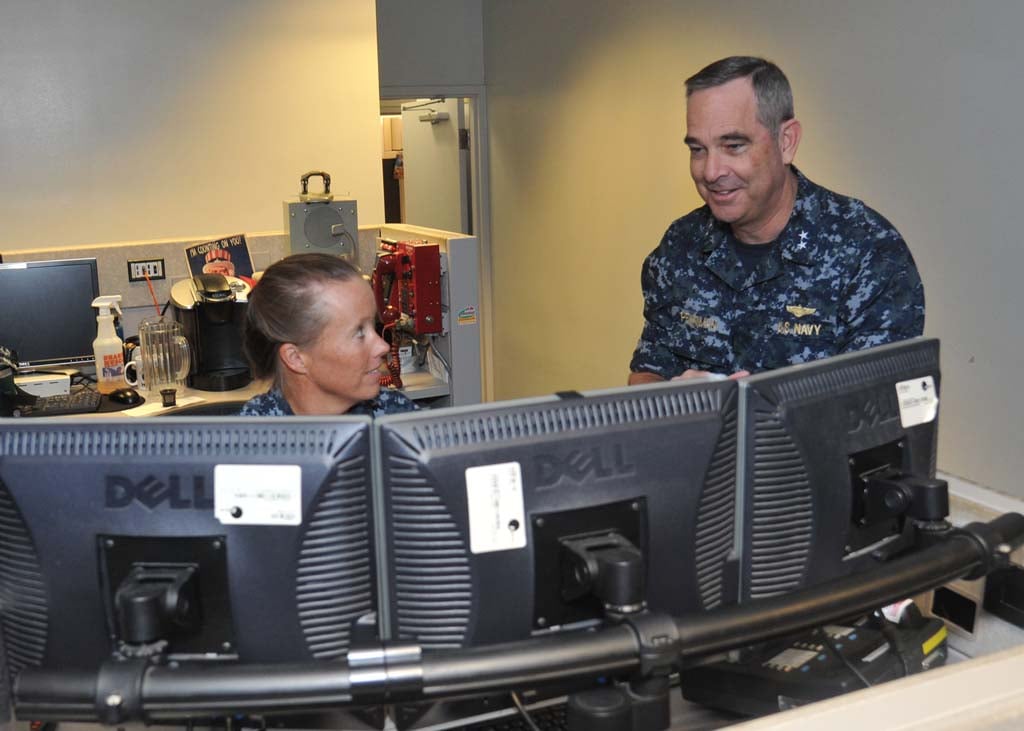RANCHO SANTA FE — For some, serving their country is a four-year enlistment, and for others, it remains an integral part of their lives. The latter example is a perfect profile for Rear Adm. Russell S. Penniman.
In 1979, Penniman graduated from the United States Naval Academy, and in 1981, earned his wings as a designated naval aviator.
A decorated aviator who was released from active duty in 1994, he joined the reserves for various staff duties, which at times pulled him back into active duty once again. Throughout this period, the fluidity of being in the reserves to active duty, and back to the reserves, has proven to be as robust as when he was a naval aviator.
A resident of Rancho Santa Fe since the early 1990s, Penniman, 56, thinks back to his training days when he became a pilot. Although he admits it’s hard to walk in the shoes of the young men and women doing it now, Penniman said with much certainty the aircraft have become better over the years.
“Everything I flew in the training command has been retired. We have new generations of aircraft for both our propeller aircraft and for our jet trainers,” said Penniman, Reserve Deputy Commander and former Maritime Operations Director. “In my time, there were two jet trainers that you flew — the T2 Buckeye and the A4 Skyhawk; and, now there is a single trainer.”
Another progressive change has been unmanned aerial surveillance vehicles. The Navy’s Triton can offer 24-hour or more overhead presence for visual observation and detection methods.
“When I was flying Tomcats, one of my missions was photo reconnaissance,” he said. Typically there were three cameras: infrared, black and white, and color.
Once he completed his visual observation mission, Penniman brought the cameras back on the ship; the films were downloaded and then developed. From start to finish, it could take hours for their intelligence specialists to view the films.
Now, these unmanned aerial surveillance vehicles communicate with the users via satellite in real time.
While Penniman has great memories being a naval aviator, he equally has a litany of fond memories in the reserves, especially when returning back to active duty.
In January 2003, he was mobilized to support Operation Iraqi Freedom and was stationed at the Prince Sultan Air Base in Saudi Arabia for major combat operations.
“I was the night director of combat plans, helping to lead the planning for that operation up to execution,” he said. “And it was probably one of the most challenging experiences, quite frankly, in my life.”
Presently, he is assigned to the U.S. Pacific Fleet, alternatively serving as reserve deputy commander, deputy commander and chief of staff.
Penniman explained that following 9/11, there was a shift with the naval reserves. Now, it’s very much integrated with the active duty force.
“You can usually walk up to any active duty staff and there will be multiple reserves doing active duty work and you can’t tell the difference from one or the other,” he said. Penniman continued, “Since Enduring Freedom in Afghanistan and Iraqi Freedom started, the reserves have mobilized over 71,000. We mobilized 55,000 folks but we covered 71,000 mobilizations with a preponderance of those being in Iraq and Afghanistan and we’ve lost 48 folks along the way.”
Although Penniman is a clear example of reserve integration, he’s quick to point out that he is not unique among the reserve force. The reserves have enabled the navy to perform at these levels through this integration.
Like most military families, Penniman thanks his wife, Carol, for making it all possible. He calls her the “glue” that keeps everything together at home when he is mobilized and may be gone for a few months.



1 comment
Howdy this is soomewhat of off topic but
I was wondering if blogs use WYSIWYG editors or iff you have to manually code with HTML.
I’m starting a blog soon but have no codinbg expertise so I wanted to get advice from someone
with experience. Any help would be greatly appreciated!
Here is my web site … best road bikes under 500
Comments are closed.